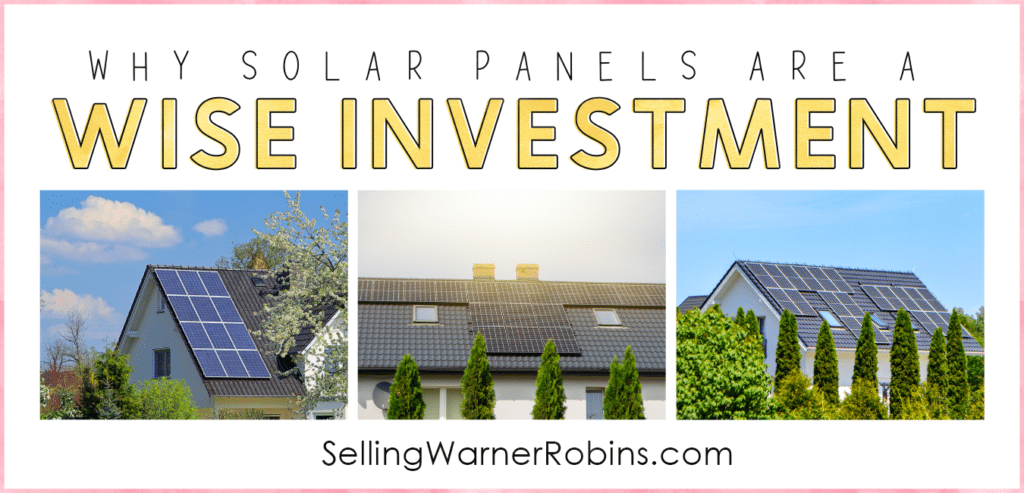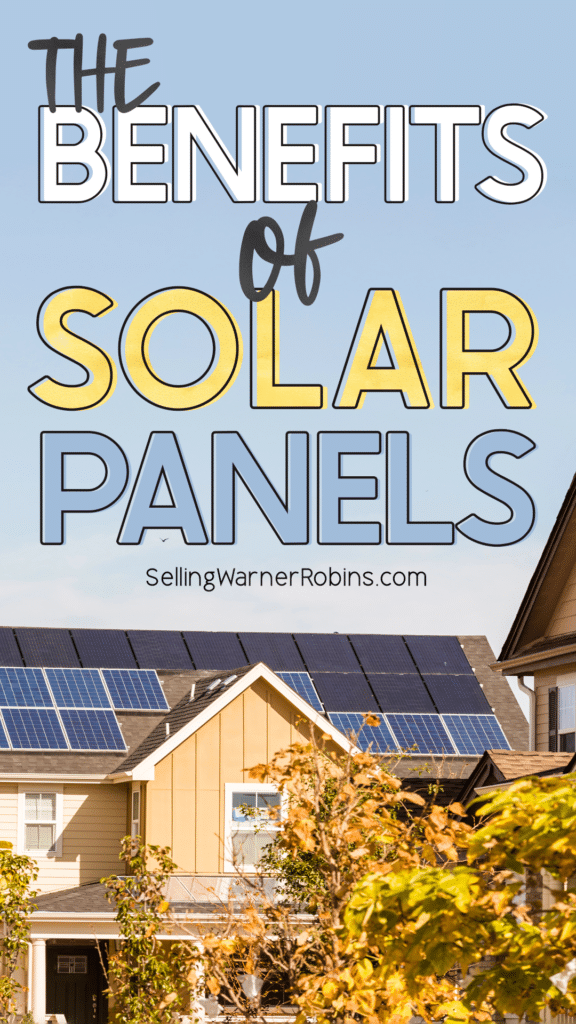Solar Panel Installation: A Wise Investment for Homeowners and Real Estate Investors

With the increasing awareness of environmental sustainability and the desire to reduce energy costs, solar panel installation has become a popular choice for environmentally conscious homeowners and real estate investors.
Maximizing ROI with solar panels hinges on flawless installation—mistakes like improper angling, inadequate wiring, and ignoring local weather conditions can severely undermine efficiency.
By navigating these common hurdles effectively, property investors can unlock significant returns, transforming solar energy into a lucrative investment.
Planning for Solar Panel Installation
Before installing solar panels, it’s essential to consider various factors to ensure a successful and cost-effective project. This process involves a comprehensive assessment, ranging from cost calculation and equipment needs to understanding the size and type of solar system required for your property.
Cost Calculation and Equipment Needed
The initial step in planning for solar panels is conducting a thorough cost assessment. This analysis goes beyond just the price of the solar panels. You need to evaluate various factors, including the solar panels brand, efficiency, and technological sophistication. You also need to account for hourly labor costs and the system’s setup and performance. These are not just limited to the installation day but include preliminary site inspections and potential follow-up adjustments.
The cost of obtaining required permits from local authorities must be addressed. These permits ensure your installation complies with local regulations, which vary significantly across regions. Additionally, the cost assessment should account for extra gear required during installation, such as mounting structures, charge controllers, batteries, and electrical components. This holistic approach to cost calculation ensures no surprise expenses down the line.
Determining the Size of the Solar System Required

Knowing your household’s habits on energy consumption is important to this end since a large solar panel system might be needed if your electricity needs match. While it is very relevant, the height of the building affects the space available for solar panels, which limits the capacity of solar panels.
Local climate conditions, including sunshine strength and weather patterns, will also determine the size of the system you need, as they can either increase or decrease power production as they vary.
Through historic energy usage, data appliance usage patterns, and peak demand times, an energy audit will provide an energy specialist with the critical information needed to size a panel system appropriately to meet energy needs. This strategic step allows for an effective solar installation that will offset your energy consumption and save you money.
Understanding the Types of Solar Panel Mounts
Familiarity with the types of solar panel support structures is fundamental for a solar energy system’s proper and ultimate setup. In mounting options, we have roof-mounted, ground-mounted, and pole-mounted mounts we can select depending on the installation requirements and preference. Regarding the selection of a mount, several factors, including the type of roof on your property and the amount of available space, must be considered.
Roof-mounted mounts are the most common ones suitable for this purpose for residential properties, and they provide a compact, solid, and comprehensive solution that utilizes sunlight well. Ground-mounted solar panels are good for places that lack attainable roofs or are in shading areas, allowing versatility in the panels’ orientation. Pole mounts are applicable in sites with no existing ground since space is limited. With these, you can have solar panels elevated to obtain maximum sunlight.
Advanced Considerations
When planning for solar panel installation, it’s also wise to consider future energy needs. Will the energy consumption increase due to family expansion or the addition of energy-intensive appliances? Planning for expandability can save significant costs and hassle in the future.
Innovation in solar technology and financing options also plays a critical role. Emerging technologies may offer better efficiency or integration with home energy systems. Financing and incentives vary by location, so you must understand these options to reduce the upfront costs and long-term return on investment.
Step-by-Step Solar Panel Installation Process
Once the planning phase is complete, you will need to understand the amount of time it actually takes to install the solar panels. The following provides you with an idea about how long the installation process will take and what you can expect at each part of the installation process.
Mount Installation
The solar installer contractors you decide to hire will affix your selected mounts to the roof of your house or whichever surface you decide to install your solar panels onto. Depending on the type of mount you intend to use. The process can take between one to three days.
Fixing the Solar Panels with the Mounting Structure
Next, the contractors will install solar panels onto the mounts. These must be attached properly to prevent any damage caused by natural elements and ensure that they provide optimal power to your home. The physical panel installation does not take long and should only last a day. Of course, this entirely depends on your solar panel installation project size.
Electrical Wiring and Connection
The right electrical wiring and connection of the solar panels are significant parts of the solar panel installation. Ensuring electricity does not flow backward and voltage compatibility is essential for safety. Doing so creates a connection between the assemblage of solar panels, either in series or parallel arrangement, to harmonize the desired electrical outage.
The installation method should be professional and reliable for the whole system, as well as for the safety of the homeowners. Correct wiring methods for solar panels and inverters are an essential part of the process of eliminating the gap from a solar system. Such as aligning the wires correctly, using preeminent wire management, actualizing the manufacturer guidelines, and going for the right connection, like MC4 and Amphenol, which you frequently encounter in solar systems.
Solar Charge Controller Sizing
A solar charge controller is a crucial part of a solar power system – it controls the amount of voltage and current passing from the PV solar panel to the battery. This process is very important because it prevents overcharging or discharging and enables the battery to reach the optimal state of charge, which in turn prolongs its lifespan.

The controller accomplishes this by monitoring the flow of energy between solar panels and batteries, protecting from possible problems, and improving the performance of off-grid solar energy systems that are grid-tied systems with battery backup.
Different kinds of solar charge controllers offer varying special features and functions. As an illustration, there are 3-stage and/or PWM Controllers, which are more advanced techniques used for effective battery charging in addition to extended protection against overheating, overloading, and reverse discharge.
The other top option is Maximum Power Point Tracking (MPPT) controllers, which are also the most sophisticated and deliver high efficiency levels, capturing more power from the battery. Selecting the appropriate charge controller for solar is very crucial, according to the specific requirements and the size of the whole system.
Inverter Sizing
Inverter sizing is the key to the efficiency of a solar panel because this is what system capacity is for to produce the alternative current necessary to run all household appliances. The inverter needs a rating similar to the DC of solar panels to achieve the best performance.
Excess or deficiency of the inverter size will affect total efficiency; thus, it is possible to lose energy from under-sizing, and oversizing could waste energy. Geographical issues, site conditions, and the weather can affect the amount of energy produced, so correct sizing of such inverters must be done to yield the best electric output.
Considering all of these factors, you can expect the solar panel installation to take around one week. However, this depends on the overall size of the project.
Benefits of Solar Panel Installation
Installing solar panels on residential houses offers numerous advantages, making it a compelling option for homeowners. With solar panels, homeowners can generate electricity, reducing their reliance on the grid. This independence provides a sense of security and protects against the fluctuating costs associated with traditional grid electricity.
As electricity rates continue to rise, the ability to produce your energy shields you from these increases, stabilizing your household expenses. The presence of solar panels can enhance the value of a property. This improvement in property value is a testament to the growing recognition of solar energy’s financial and environmental benefits, positioning it as a wise long-term investment for property owners.
A Shield Against Rising Electricity Costs
As electricity rates continue to rise, the ability to produce your energy shields you from these increases, stabilizing your household expenses. The presence of solar panels can enhance the value of a property. This improvement in property value is a testament to the growing recognition of solar energy’s financial and environmental benefits, positioning it as a wise long-term investment for property owners.
Immediate Cost Savings and Long-Term Investment
Focusing on immediate cost savings involves identifying and implementing measures that reduce expenses in the short term. This can include streamlining operations, reducing energy consumption, and negotiating better terms with suppliers. Such actions provide quick financial relief and improve cash flow, allowing businesses to reallocate resources more effectively.
Long-term investment is about strategically deploying capital towards opportunities that promise growth and sustainability over time. This might involve investing in technology, workforce development, or expanding market presence.
Although these investments may yield little financial returns, they are critical for securing a competitive edge and ensuring the business’s longevity. Balancing immediate cost savings with long-term investment is crucial for creating a resilient and thriving business.
Environmental Impact and Sustainability
Besides the financial and real participation in “green” energy that solar panels are known for, they help with the optimal fuel consumption for clean energy generation. Use of the sunlight to generate energy and fight against climate change can be done by homeowners and investors, which leads to minimized carbon footprints. Solar energy is efficiently renewable, and replaces fossil fuels that harm the atmosphere. In turn, it operates on a renewable and sustainable system.
Potential Increase in Property Value for Real Estate Investors
Such installation can pressure to boost the property’s market price. Houses featuring solar panels are often in demand due to the speculative energy savings, prospective tax deductions, and eco-friendly elements they bring. Solar power installations have been evidenced to be one of the last procedures that home buyers complete before moving in. This draws significant price premiums and faster sales for more environmentally conscious buyers.
Value Added After Solar Panel Installation
According to studies, adding solar panels to a property may increase its value by as much as 10%. According to a study by Zillow, solar panels can boost the valuation of a house by 4.1% on average, with buyers willing to pay 4.1% more for a solar-powered house. The added value may vary by location, local electricity rates, solar system quality, and local policies, which shall affect the extra value of the solar homes.
Government incentives and policies, for example, feed-in tariff programs or tax credits, may deepen the financial value of a property. We need to remember that actual property value increase will depend on various factors, such as the size and efficiency of the solar energy system, the location of the property, and the market situation. Nevertheless, some research has indicated that solar panels add value to the house, making them an attractive option for homeowners.
So Is Solar Panel Installation in My Home Worth It?
Installing solar panels is the most important component of moving to solar energy and enjoying its advantages. When residents go solar, they purchase a sustainable energy source that could significantly cut their electricity bills. The solar energy system installation cost can be paid back using tax credits, which is a financially attractive option.
If homeowners choose to go with solar companies that are well-known and have a good reputation, then they can rest assured knowing that their residential solar installation should be professionally installed. This includes an energy audit, guidance on energy efficiency, and the utilization of superior-quality parts.
Careful planning is involved in the installation process, and safety considerations and compliance with electrical codes are necessary. Correct installation and wiring of solar panels, together with the correct sizing of inverters and charge controllers, are significant for an efficient and reliable solar energy system to function.
Through the knowledge of solar panel wiring and different stringing configurations, homeowners can guarantee that their solar systems will be set up optimally. Eventually, proper planning and professional installation of solar panels may result in major cost reduction, energy security, and environmental influence.
For additional information, see what the Dept of Energy says about going solar.
If you found this article on solar panel installations and how they are a wise investment for homeowners and real estate investors helpful, please share the article so more consumers can benefit from the information.
Installing Solar Panels: A Wise Investment for Homeowners and Real Estate Investors
About Anita Clark Realtor
Anita Clark has written 646 posts on this blog.
by Anita Clark Anita is a residential Real Estate Agent in Warner Robins Georgia, with Coldwell Banker Access Realty (478) 953-8595, aiding buyers and sellers with all their real estate questions on her Warner Robins blog.




